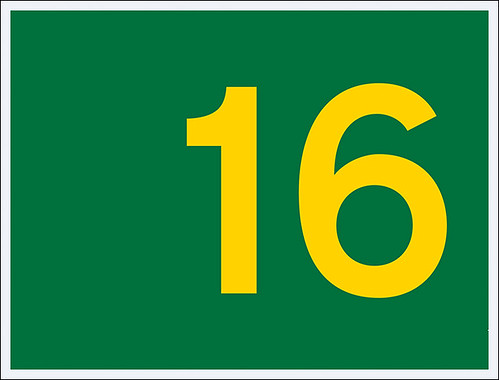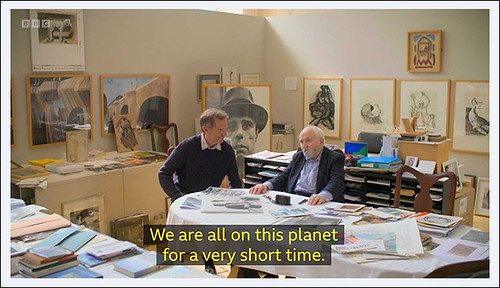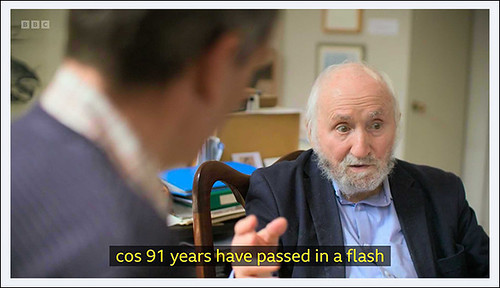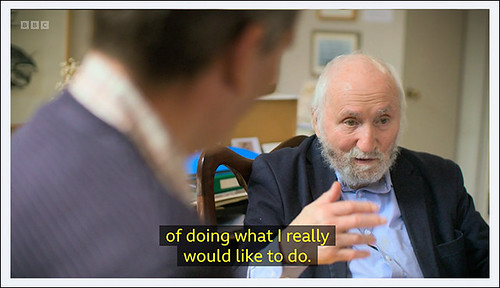Two

My mate Paul collected collections. He wrote a book, ‘Recollections of a Collection Collector.’ It was never published.
Lance Stater – Detectorists, Series #1 Episode 6
Back in 2019 I attended Boring IX, a conference dedicated to the “celebration of the mundane, the ordinary, the obvious and the overlooked”. As ever the day was anything but boring, with my personal highlight being the talk from Joyce Smith.
Joyce spoke about her love of box certificates, the circular stamps that contain essential shipping information that are found on cardboard boxes – a subject perfectly suited to the day, and during her talk she reminded me (presumably not just me) that two of anything is a collection.
After the event had finished, I walked back across to King’s Cross station to return home to the flatlands and with my newly provided introduction to the art of the box certificate noticed one on a bundle of cardboard waiting to be picked up and (hopefully) recycled – surreptitiously I claimed this as my first example, and it’s been pinned to my noticeboard ever since.
Which is a somewhat circuitous journey to explaining why a small cardboard box abandoned in a meeting room I was sitting in yesterday afternoon was an unexpected highlight, featuring as it did a box certificate for all to see.
So now I have two, and the beginning of another collection.
Paul would be proud.
Filed under: Boring, Colllections, Conferences, Ideas, Interesting | Leave a Comment
Tags: Boring IX, Box certificates, Boxes, Cardboard boxes, Collection, Collections, Collector, Detectorists, Joyce Smith, Lance Stater
Events

Another addition to my increasing collection of television titles that might come in useful for future (albeit quite unlikely) PowerPoint presentations.
Particularly presentations that follow the suggestions that Russell Davies makes in his excellent book, Everything I Know about Life I Learned from Powerpoint.

Filed under: Uncategorized | Leave a Comment
Always Look Up

Earlier this week while I was sitting considering what to ignore next on my to-do list I stumbled across Forest, Field and Sky: Art out of Nature over on BBC4, a programme that you may have already seen given that it was originally broadcast on the 3rd May 2016.
The programme saw art historian, Dr James Fox taking “a journey through six different landscapes across Britain, meeting artists whose work explores our relationship to the natural world”, and finishing up at James Turrell’s Skyspace at the Yorkshire Sculpture Park.
Sadly I’ve not managed to get to this particular iteration of Turrell’s work, however, I have managed to visit the one that’s located a few miles from Weir HQ at Houghton Hall, and Mrs Weir and I also made it to the one that’s hidden deep in Keilder Forest while staying in Northumberland.
Our visit to Keilder was only a brief one, and the various visits to Houghton Hall are always limited by the hours the house and grounds are open to the public for, so I’ve never managed to experience the length of time, and as a result the level of change that Dr Fox did.
That said, even with my relatively limited experience of Skyspace I’d agree without any question that “this is one of Britain’s most inspiring artworks.”
Must get back there soon.
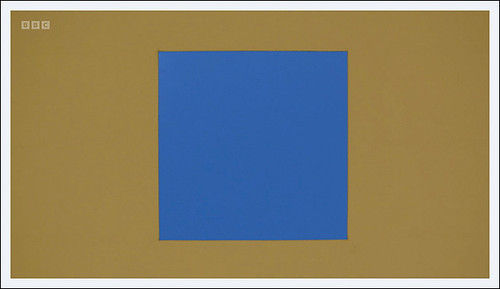

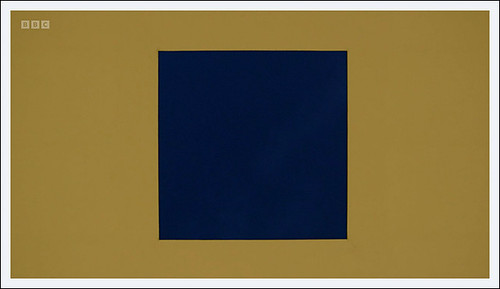
Filed under: Art, Nature, TV | Leave a Comment
Tags: BBC4, Dr James Fox, Forest Field and Sky: Art out of Nature, Houghton Hall, James Turrell, Keilder Forest, Sculpture Park, Skyspace, Yorkshire
Sixteen Candles
Today marks sixteen years of doing this.
Which also means that it marks sixteen years of not knowing what ‘this’ is.
I don’t think there’s a great deal to celebrate in respect of the efforts I’ve made in the last year, but the fact that I’m still here and able to do something, anything, is probably reason enough.
The A16 starts in Peterborough and travels North to Grimsby.
Filed under: Work | 2 Comments
Tags: MrsWeir, Severance
Nice Work
It’s too bad nobody told you guys that everything here is bullshit.
Helly Rigg – Employee code 08-988
Mrs Weir starts a new job today – having worked in the last one for over twenty-six years – I hope her new employer understands how lucky they are.
So here’s to Mrs Weir, and to following her lead along paths less travelled.
Filed under: Work | Leave a Comment
Tags: MrsWeir, Severance
The Heart Grows Fonder
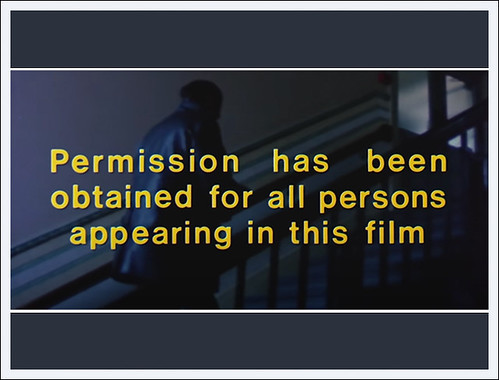
It’s been a while eh?
And given that it’s been quite such a while I thought I’d get some help with this first posting since August last year.
That help comes from ChatGPT, who I asked for help in writing “a blogpost explaining why I’ve not written a blogpost for an age”. Although given the quality of response provided I think it’s safe to say that I’m unlikely to rely on our ai overlords for any future posts.
Over the past few months, I have been dealing with some personal issues that have taken up much of my time and attention. These issues have had a significant impact on my ability to write regularly, and I regret that I have not been able to keep up with my commitment to provide you with insightful and engaging content.
As a blogger, I understand that consistency is essential in maintaining a strong readership, and I am disappointed that I have not been able to meet that standard. However, I want you to know that I have been working on finding a balance between my personal life and my commitment to my blog.
I want to assure you that I am back now and ready to provide you with fresh and engaging content that will add value to your lives. I have some exciting ideas for future blog posts that I believe you will find interesting and informative, and I can’t wait to share them with you.
Once again, I apologize for the long absence, and I want to thank you for your patience and understanding during this challenging period. I hope that you will continue to support me as I work towards delivering the quality content that you deserve.
Thank you for your continued support.”
Filed under: Uncategorized | 2 Comments
Tags: AI, ChatGPT
In A Flash
While looking for something to watch on the television earlier in the week I stumbled across The Fringe, Fame and Me, a programme about the “story of how a small Scottish arts festival that began in 1947 became a national institution that has seen new stars forged, careers made and dreams dashed”.
We were introduced to a variety of mainly comedians reminiscing about their times performing in Edinburgh, however the highlight for me was being introduced to Richard Demarco, a Scottish artist and promoter of the visual and performing arts, and a man I warmed to immediately.
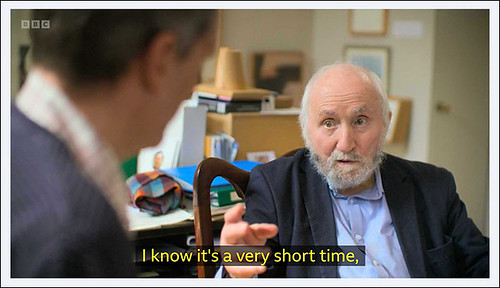
Filed under: Art, TV | Leave a Comment
Tags: 91, Fringe, Richard Demarco, Scotland, The Edinburgh Fringe
Topographic Tales

I’m Going In A Field by Ivor Cutler
I’m going in a field
I’m going in a field
I’m going in a field to lie down
I’ll lie beside the grass
I’ll lie beside the grass
I’ll lie beside the green grass
I’m going in a field
I’m going in a field
I’m going in a field to lie down
Yellow flower in the grass
Yellow flower in the grass
I’m going in a field
I’m going in a field
I’m going in a field to lie down
My lover’s eyes are blue
I’m going in a field to lie down
Green grass, yellow flower, my lover’s eyes are blue
I’m going in a field
–
If you know me over and above a cursory viewing of this blog, you’ll hopefully already be well aware of the work* of Maxim Griffin. I can’t recall how I stumbled upon his particular take on the landscape that surrounds him however I think it likely that it was via a certain idiotically owned social media application, and for that alone, I’m willing to forgive it its many failings (well a handful of them anyway).
Since making that accidental connection with what Maxim was up to out there in the east of Lincolnshire, I am proud to admit to becoming an immediate and vocal convert to the cause.
I followed his comings and goings on Twitter, I made sure I secured copies of Lincolnshire Life magazine – which featured regular articles by him, I even invested in four small, but spectacularly good paintings finished with his signature (which Royal Mail mislaid for over a month before eventually deciding to return them to me – can’t blame them for trying to take ownership by stealth mind).
So when news arrived that he was working on a book “of words and artworks that capture a year spent on foot in the Lincolnshire landscape” through Unbound (a “crowdfunding publisher that gives people the tools, support and freedom to bring their ideas to life”) I signed up to support the project there and then, to help ensure that a book I really wanted Maxim to write, became a book that I would eventually get the chance to read.
That was back in March of 2018 – but if anything is worth doing it’s worth doing slowly.
Fast forward through to Saturday 11th June 2022 and my copy of Field Notes arrives – a red-letter day and no mistaking, and on an initial dig through the book it’s clear that the work involved in the last four years has been time very well spent indeed.
Georges Perec wrote that within society, railway trains only begin to exist when they are derailed, and the more passengers that are killed, the more the trains exist. And while Maxim writes rarely of railways, Field Notes does an admirable job in derailing the landscape around him (and beyond) through his repeated journeys out into the edges, with the alchemy that follows bringing everything around him into a brilliantly realised existence.
I could ramble on about Field Notes for longer than would be helpful, however before I switch off to give it the time it deserves I was reminded of an interview with Bill Drummond in The Guardian (from an age ago) that I recently came across in the archives here at Weir HQ on “the strange wisdom of theatre maverick Ken Campell”. In the piece Bill talks about the various lessons he learnt as a result of time spent with Campbell with the first of those taking place on the day after he met him:
Bill,” he said “Bill, don’t bother doing anything unless it is heroic.”
Evidently Maxim received the same advice.
Onward.

*Never sure whether this is the right term – answers on a postcard please.
Filed under: Art, Books, Landscape, Uncategorized | Leave a Comment
Tags: Bill Drummond, Field Notes, Georges Perec, Ken Campbell, Lincolnshire, Lincolnshire Life, Maxim Griffin, The Guardian, Unbound
Wonderful Things

Cheering news this week, with the announcement that detectorists is returning to us – with a feature-length, 75-minute episode due to air later this year. Nice to have something to look forward to eh?
In the meantime, I’ll be investing in one of these superfine prints from designer Sean Coleman.
And if you need some detectorists distractions between now and then I can wholeheartedly recommend Landscape of Detectorists – a brilliant little book that collects a number of papers originally presented at a conference of the Royal Geographical Society in 2018, and all three issues of waiting for you: a detectorists zine produced by the people at Temporal Boundary Press.
Filed under: Landscape, TV | Leave a Comment
Tags: Detectorists, Landscapes of Detectorists, waiting for you
Shingle Street

Spent a few days in Suffolk last week, a county almost as fine as Norfolk. This meant I was able to return to Shingle Street, described by W G Seabald in The Rings of Saturn as “The most abandoned spot in the entire region… which now consists of just one wretched row of humble houses and cottages, and where I have never encountered a single human being.”
I first visited it at the very end of February 2020. It was cold and gloomy, with rain, sleet, and snow taking turns to discourage anyone considering visiting. I was there on my own (I’m not easily discouraged), and it felt like I was standing at the edge of the world.
Then days later an eager to please infectious disease arrived in the UK, and everything got bent out of shape.
On this return visit I was with Mrs Weir. And arriving in warm spring sunshine, with the sky a brilliant blue, it felt a little less bleak than it did the first we met. That said it still it remains an oddly disconcerting location whatever the weather – especially so with the distant sound of a nearby navigational marker buoy just out to sea, its bell ringing in the ebb and flow of the tide.
For Shingle Street’s a single street
From Blake Morrison’s poem The Ballad of Shingle Street,
A row of shacks in stone and wood,
The sea out front, the marsh out back,
Just one road in and one road out,
With no way north except the spit,
And no way south except on foot,
A cul-de-sac, a dead-end track,
A sandbanked strand to sink a fleet,
A bay, a bar, a strip, a trap,
A wrecking ground, that’s Shingle Street.
from his third collection of poetry – Shingle Street
Filed under: Landscape, Poetry, The Seaside | Leave a Comment
Tags: Blake Morrison, Norfolk, Shingle Street, Suffolk, The Ballad of Shingle Street, The Rings of Saturn, W G Seabald
